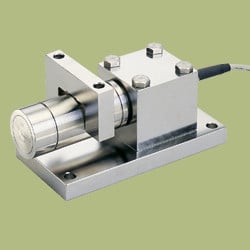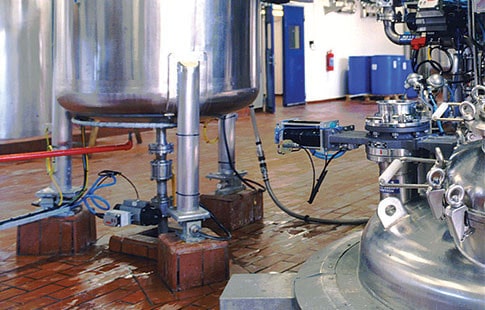The following post focuses on BLH Nobel, our featured manufacturer this month, and specifically on their KIS load cell. BLH Nobel is a leader in industrial weighing & force measurement. With both standard & custom products, BLH Nobel offers solutions to customers all over the world to help optimize their processes.

What is a load cell?
Load cells are the main component of all weighing technology. A load cell is a transducer that measures the amount of force being applied to an object, such as the amount of gravity being applied to a tank full of liquid. The load cell then translates that amount of force into a measurable output, such as pounds.
There are 2 types of load cells, including hydraulic & the more common type, strain gauge. Since the development of strain gauge technology, the basic composition of the load cell has not changed.
What is the function of a load cell in weighing & measurement?
All scales utilize load cells. It may be helpful to think of the load cell as the brain of the scale. In that case, you can think of the indicator, or the screen on which the weight is displayed, as the mouth of the scale because it communicates what the brain wishes to convey.
Load cells are manufactured in all sizes, and all capacities. Load cells are the key component of every scale, from bathroom scales used to measure body weight to truck scales used to measure cargo.

The role of load cells in industrial settings & process weighing
In industrial settings & process weighing, load cells may be placed directly under a tank, instead of being housed within a scale. These load cells are most often strain gauge load cells.
As the tank is filled, the load cells deflect, which alters the electrical resistance of the load cells. The amount of change in electrical resistance is proportionate to the amount of force, or strain, being applied to the load cell. The strain can be translated into the amount of pounds pushing down onto the load cells, therefore indicating the amount of weight contained within the tank.
What makes the BLH Nobel KIS load cell unique?
The KIS load cell from BLH Nobel was specifically designed to provide the most accurate weight, even in non-ideal situations. The challenge with tank measurement is that load cells are negatively affected by bending, side loads, & many other factors. Bending can occur in many different situations, such as batching operations, or tank loading.
If force is applied unevenly to the load cells, the weight displayed on the indicator could be incorrect. Side loads refer to force being applied from the side of the object being weighed instead of from the top. For example, a strong wind blowing against the side of a tank may cause a side load to register, which could display an incorrect weight.
The video below illustrates the unique advantages of the BLH Nobel KIS load cell.
How important is accuracy to your bottom line? Learn more about the cost of inaccuracy in the white paper from BLH Nobel, Weigh Systems: Calculate the Cost of Inaccuracy from BLH Nobel.
Want to plug in your numbers & see how much you could be losing because of an inaccurate scale?

